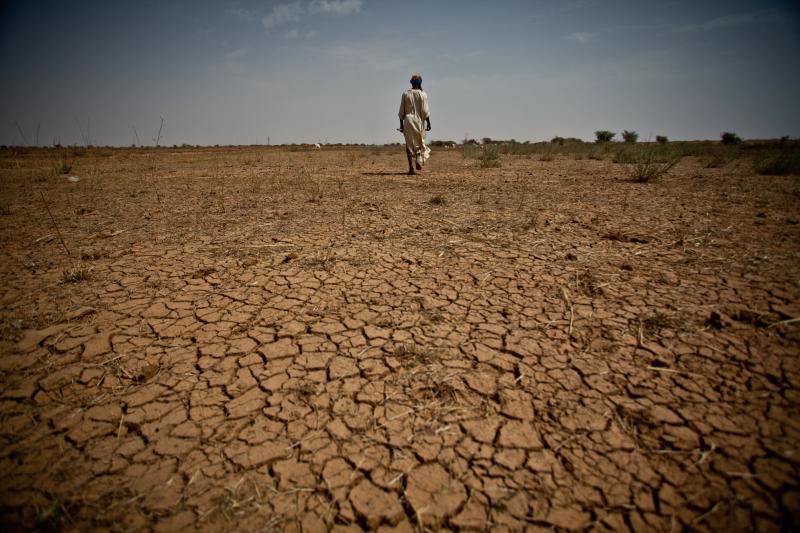
Written by Victor Adetula, Camilla Houeland and Tone Sommerfelt, first published in `Africa is a Country`.
The world’s most extensive humanitarian crises is currently playing out in northeastern Nigeria and around Lake Chad. About three million people have been displaced, seven million are dependent on food aid, half a million children are malnourished and 14 million children without schooling.
In February 2017, Oslo in Norway, jointly with Germany, Nigeria and the United Nations, OCHA, hosted a donor conference for the crisis. The aim of the conference was increased awareness and political commitment, as well as to secure funding for humanitarian needs. But good solutions require a thorough understanding of complex causal factors in the environment, economy, politics and religion, ranging from local to international affairs.
The conference was a response to growing international concern about the massive humanitarian needs in the region and the possible consequences crisis may have on global security and migration.
The crisis is usually associated with jihadism and the violent Islamist group Boko Haram, which made themselves known internationally in 2014 when they were responsible for the kidnapping of 276 girls in Chibok. Boko Haram has taken inspiration and tactics from both Al Qaeda and the Islamic State (IS), but their religious references are also linked to pre-colonial caliphate in the area – Borno and Sokoto. Although religion is an important component in understanding the conflicts in the area, there are several actors and causes other than the religious that must be considered in order to understand the crisis around Lake Chad: Boko Haram power base is also based on criticism of the Nigerian government’s failure ability to take care of the population. Extreme poverty, inequality, corruption, government, neglect and political abuse of power characterize the local context. Many people fight for access to limited resources in an area that stretch across several borders.
The borders between the countries in that area have always been porous borders and high mobility of people, goods and ideas. The flow of people and resources have increased in scope in recent years. More violent and criminal groups involved in drug trafficking, weapons, cattle and people operate in the area. In the chaos after Gaddafi’s fall, we saw a movement of people and weapons from Libya south to Mali, Niger, Nigeria and Chad. Originally, many came as traders but absorbed into radical Islamist groups in the region, which has contributed to the escalation of ongoing conflicts.
In addition, pressure on natural resources increase threats. Lake Chad, which is the main source of water for both agriculture and people, has decreased from 25,000 square kilometers in 1960 to 4,800 in 2014. Between 2005 and 2016, the population has more than doubled from 17 million to 38 million. The soil dries out, and food production drops drastically. Four out of five people struggle to get adequate food and the UN warns of famine.
The relevant states have failed to provide its citizens security or basic social goods such as health, water, food and education. In spite of the economic growth in Nigeria between 2000 and 2014, poverty has increased and people see little of the increased government revenues. This is key to the narrative of an overall economic growth that is currently dominating about West Africa. North-East Nigeria is the poorest area in Nigeria, with 40 percent official unemployment, only 20 percent can read and write, and 70 percent live in poverty.
The effects of insurgency groups’ activities and government counter-insurgencies have aggravated the situation further. Basic poor infrastructure such as roads, school buildings, health centers and hospitals, and the ability to deliver social services are deteriorating in communities of northeastern Nigeria and across the border to Niger, Chad and Cameroon. In addition, the Nigerian military and police are according to Amnesty International responsible for human rights violations and excessive use of force. The states lack basic popular trust, which strengthens the cultural and religious identities and fosters terror and livelihoods outside the law.
This is why the humanitarian aid on basic needs such as security, food and water, health and education, can build a basis for peace around Lake Chad. The spiraling humanitarian crisis coupled with violence in northeastern Nigeria and the Lake Chad area is a threat to our global security. It is crucial that we do not relate to the crisis within the framework of “anti-terrorist” and “anti-radicalization”, isolated from other actors and dimensions. More generally, the humanitarian efforts must be seen in conjunction with long-term development of the area and of confidence in the state. Even in the short term, there must be investments in infrastructure and strong government institutions. The basis for long-term peace is in governance and economic development and must take into consideration the reconciliation between religious and ethnic groups, and between government and people. This requires enormous resources and internationals effort – that must be transparent and accountable.
Victor Adetula is Research Director at Nordic Africa Institute in Uppsala. Camilla Houeland is a PhD Fellow at Noragric, the Norwegian University of Life Sciences and Fafo. Tone Sommerfelt, is a Senior Researcher Fafo.


